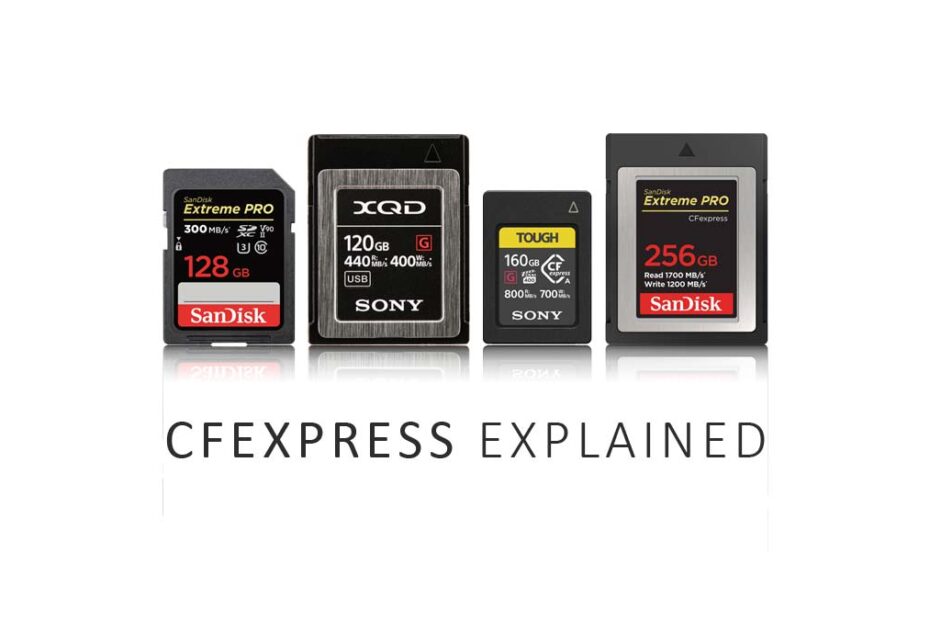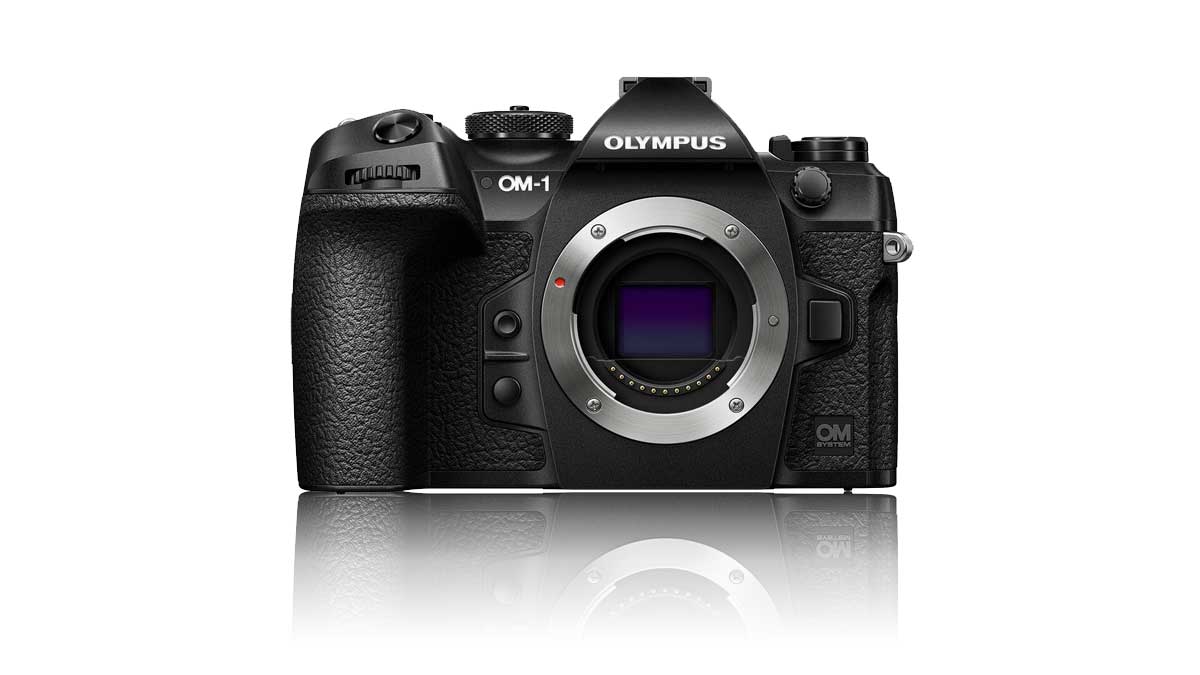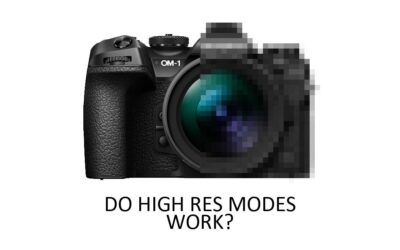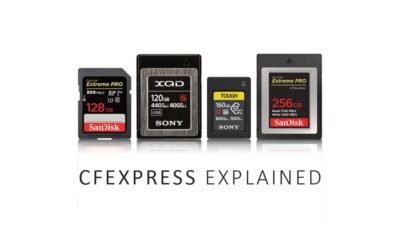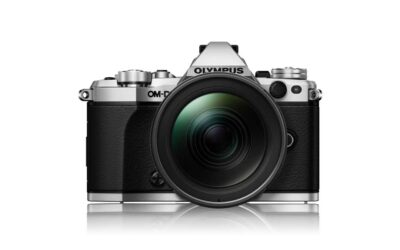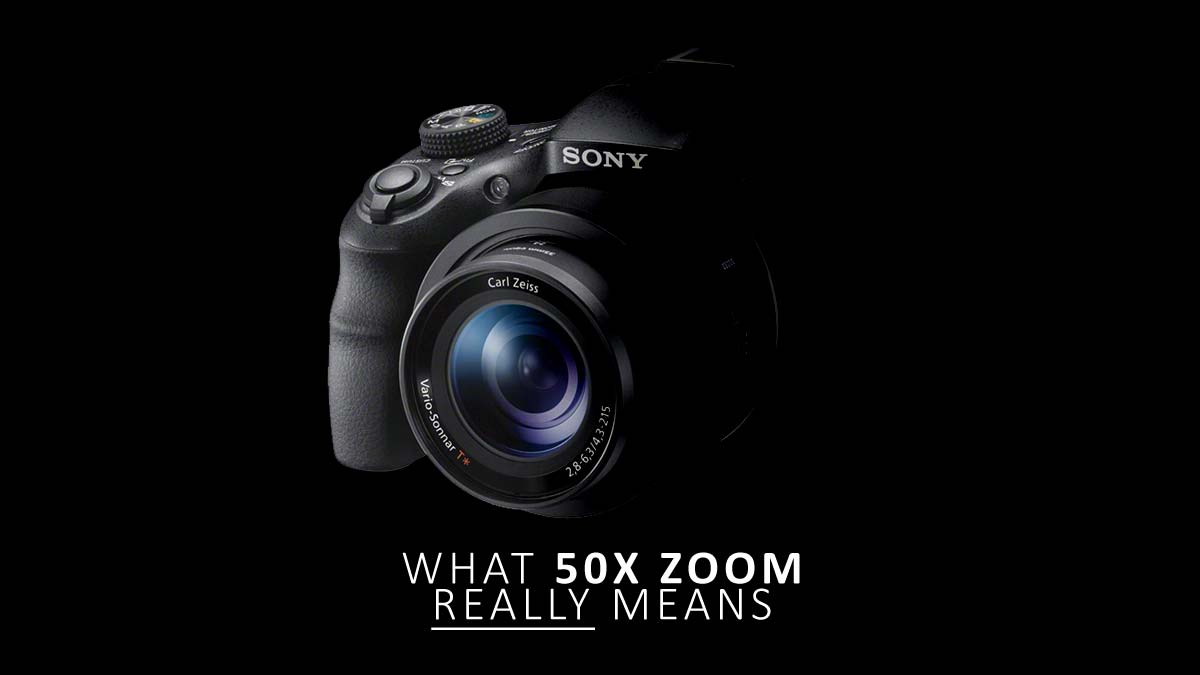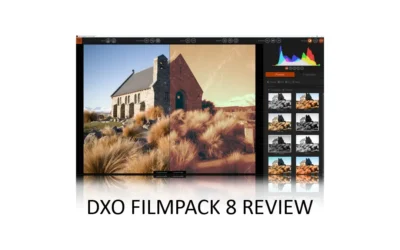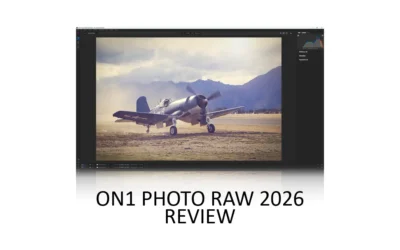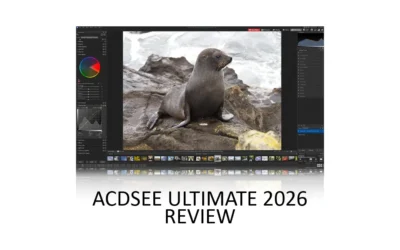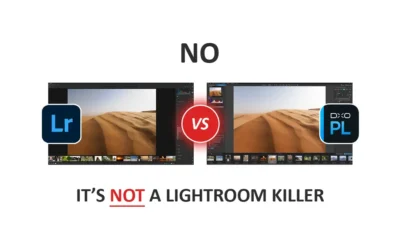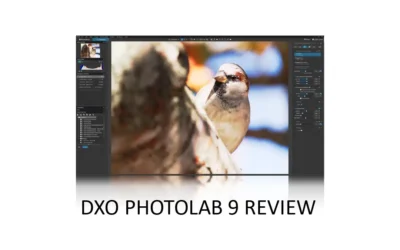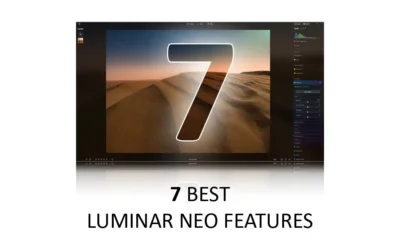In this post, we’re looking at CFExpress cards. Specifically, what is a CFExpress Card, the differences between CFExpress A vs B, and how CFExpress compares with SD Cards. Jump to Conclusion
Shop CFExpress Cards



CFExpress vs SD Cards – Contents
- What is CFExpress
- CFExpress Type A vs B
- CFExpress vs XQD
- CFExpress vs SD
- Why are CFExpress Cards so expensive?
- Do you need a CFExpress card?
- Conclusion
What is CFExpress
CFExpress cards represent the next generation of memory cards and the likely replacement for SD cards. Brought to you by the makers of the once-popular compact flash card – the CompactFlash Association, CFExpress cards leverage PCI Express, the same super-fast technology used by solid-state drives and PC graphics cards.
As a result, CFExpress cards are significantly faster than the fastest UHS-II SD Cards and, as you might expect, more expensive. Presently, two versions of CFExpress are on sale today, CF Express A and CF Express B.
CFExpress Type A vs B
What is CFExpress A
CFExpress Type A has a maximum data throughput of 1GB per second. As a result, CFExpress A is up to 50% slower than CFExpress Type B cards.
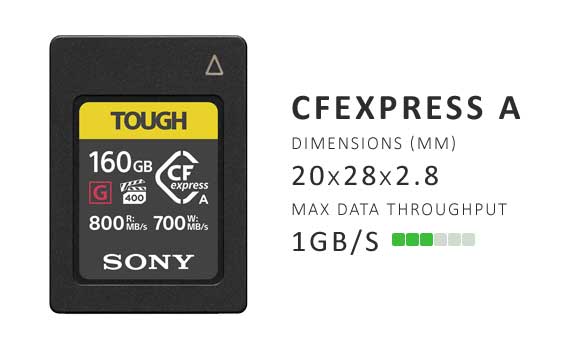
But despite being slower than CFExpress B cards, CFExpress A is still more than three times faster than the best UHS-II SD cards. CFExpress Type A cards are currently limited to high-end Sony cameras, such as the Sony A1 and A9.
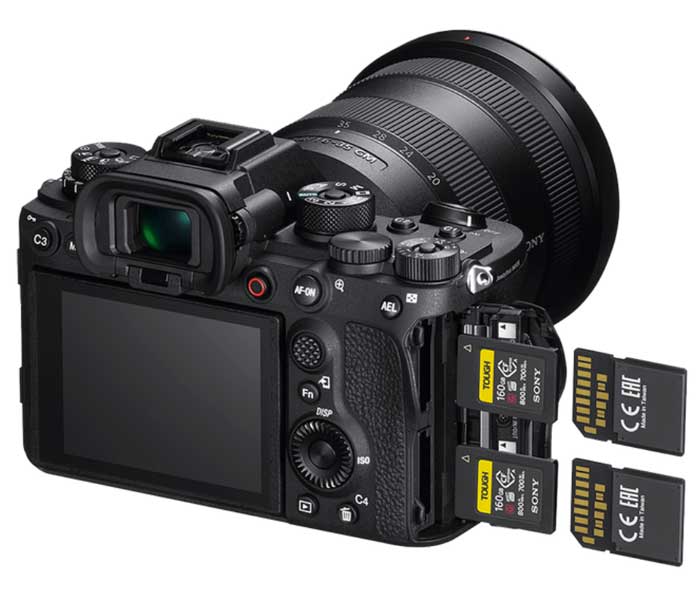
What is CFExpress B
CFExpress B cards are larger than CFExpress Type A cards and leverage the 2-lane PCI Express v3.0 interface for a maximum data throughput of up to 2GB per second. As a result, CFExpress B cards have the potential to be twice as fast as CF Express Type A and approximately 6-times faster than the best UHS-II SD cards.
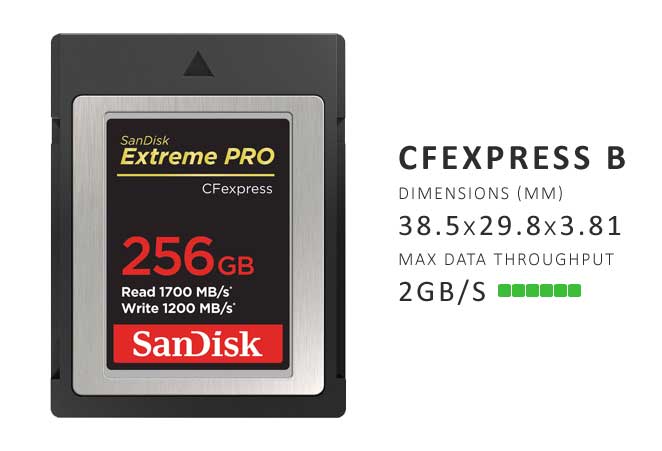
Furthermore, the CFExpress B card shares a similar form factor to XQD cards. Thus, CFExpress B cards can be used in an XQD slot, assuming your camera’s firmware is game – as is the case with the Nikon Z6ii and Z7ii.
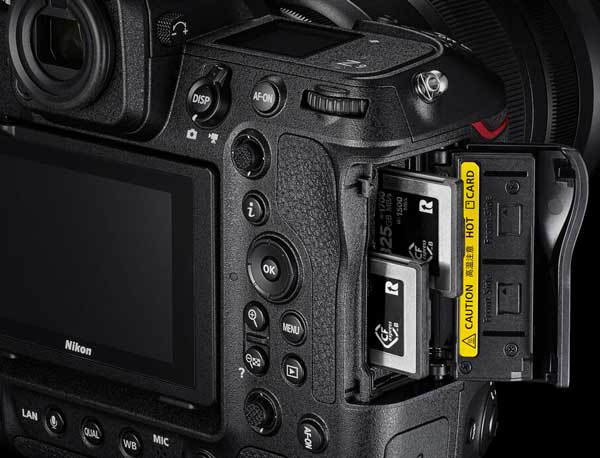
CFExpress A vs B Compared
CFExpress B cards are twice as fast and much larger than CFExpress Type A cards. Furthermore, CFExpress B’s ability to slide into a compliant XQD is advantageous. However, a smaller CFExpress A card is better for more compact cameras and devices.
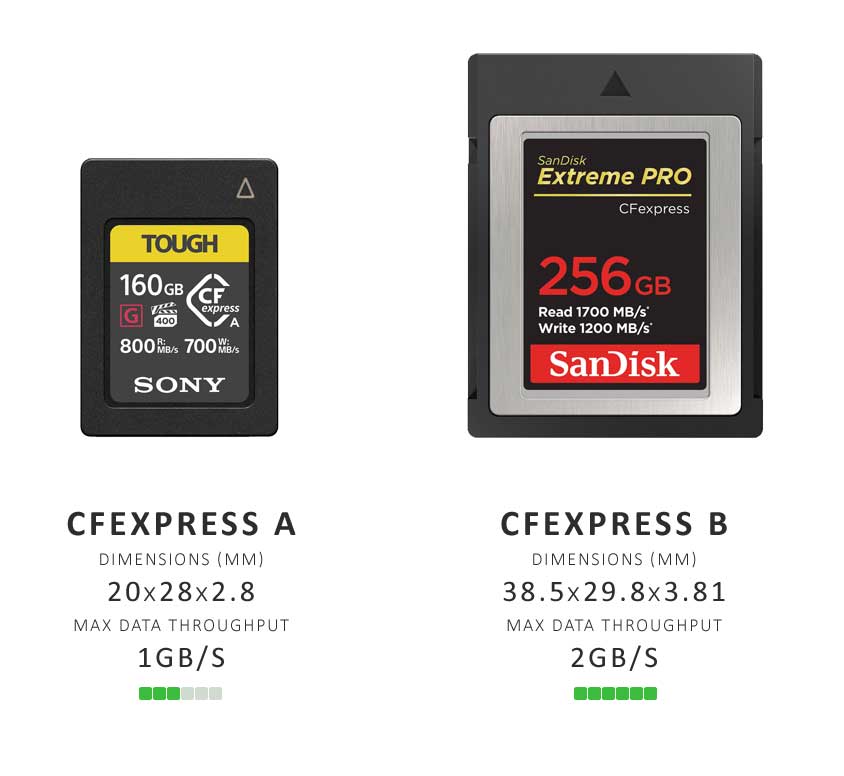
CFExpress vs XQD
CF Express B (2GB/s) cards are up to twice as fast as the latest XQD Version 2 cards (1GB/s). And while a CFExpress Type B card shares the XQD form and has the potential to fit into an XQD card slot, an XQD card cannot operate in a CFExpress Type B slot.
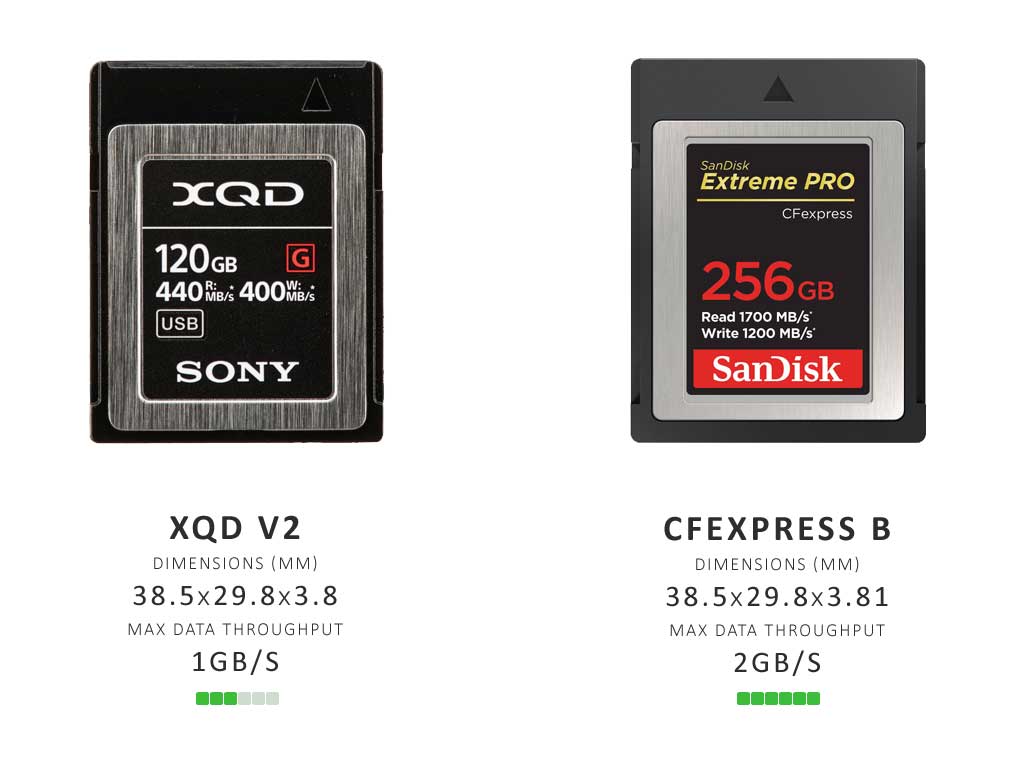
At this stage, CFExpress B appears to replace XQD with card manufacturers such as Lexar, turning away from XQD in favor of CFExpress.
CFExpress vs SD
CFExpress cards are up to six times faster than the best SD UHS-II cards. However, SD cards are smaller and cheaper – especially if you can get by with a slower UHS-I card. Read SD Cards Explained.
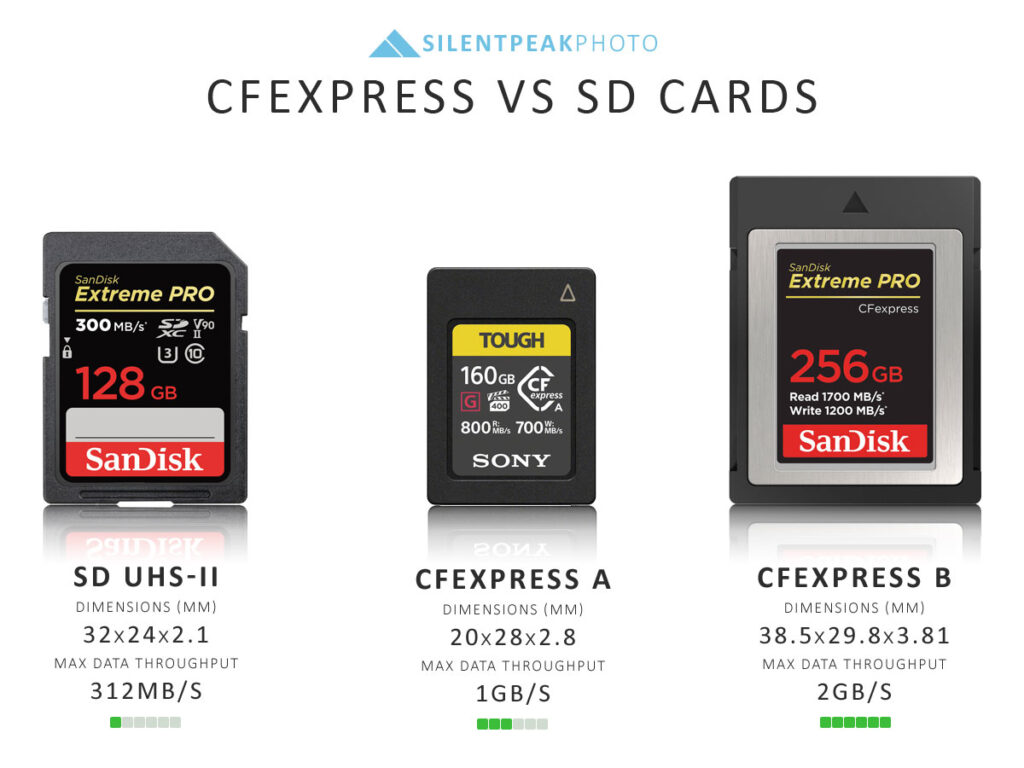
SD Cards remain fast enough for most devices and use cases. However, high-end cameras, such as the Nikon Z9, Canon R3, and Sony A1, demand more speed than any SD card can give. Thus, using an SD card in such a camera slows performance and limits functionality.
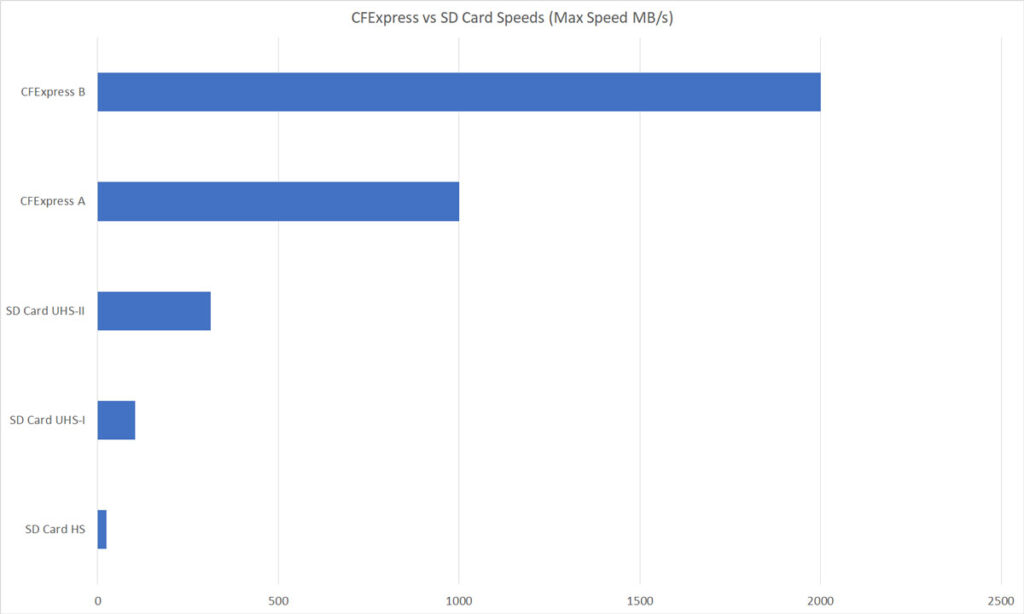
| Memory Card | Max Data Throughput MB/s |
|---|---|
| SD Card HS | 25 |
| SD Card UHS-I | 104 |
| SD Card UHS-II | 312 |
| CFExpress A | 1000 |
| CFExpress B | 2000 |
But, as megapixel counts continue to climb and high-framerate 4K and 8K video become the norm, SD cards will no longer be sufficiently fast for even more modest cameras and devices. At this point, CFExpress will replace SD Cards.
HIGHLIGHTED SOFTWARE DEAL – ARTICLE CONTINUES BELOW

TOPAZ PHOTO AI 2
NOW US$199. READ TOPAZ PHOTO AI REVIEW
Why are CFExpress Cards so expensive?
CFExpress cards remain a niche, low-volume product limited to owners of expensive high-performance cameras. However, this is already changing. As time passes and typical functionality exceeds the capabilities of the fastest SD cards, I expect CFExpress Cards to become as common and cheap as SD cards are today.
Do you need a CFExpress card?
Probably not, as only a handful of cameras accept CFExpress cards. Furthermore, some cameras using CFExpress cards work well enough with a UHS-II SD Card. However, the capabilities of top-tier cameras such as the Nikon Z9, Canon R3, and Sony AI have already exceeded the limits of SD cards.
Eventually, these SD Card-busting features will trickle down to mainstream cameras and smartphones, and we’ll all need to upgrade. So, CFExpress is here to stay. As 4K video replaced Full HD, 8K will replace 4K, and CFExpress will transition from luxury to essential.
Get Discounts on Photo Editing Software
Subscribe to my weekly newsletter and be notified of deals and discounts on photography software from ON1, Adobe, Luminar, and more. Spam Promise: Just one email a week, and there’s an unsubscribe link on every email.
Conclusion
CFExpress cards are expensive, absurdly fast, and here to stay. Nevertheless, SD Cards are not going anywhere just yet as they remain sufficiently fast for most cameras.
But cameras such as the Sony A1, Nikon Z9, and Canon R3 are not most cameras, and their elite-level performance demands far more speed than an SD card can give. As time passes, today’s high-end features, such as 8K video and high continuous shooting, will trickle down to mainstream cameras rendering the SD card insufficient and obsolete and CFExpress the de facto standard.
Shop CFExpress Cards



